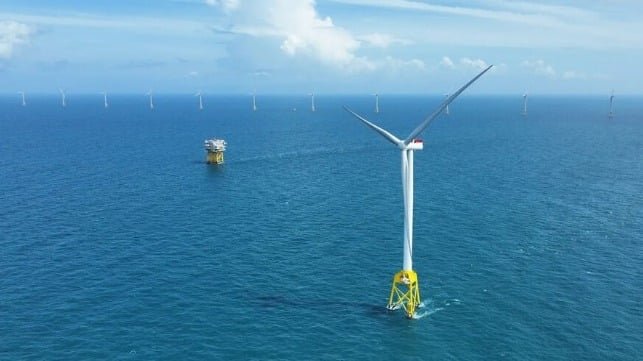Ørsted Partners with Cathy Life to Expand Offshore Wind Energy in Taiwan
Ørsted is making significant strides in Taiwan’s offshore wind energy sector by entering into a partnership with Cathy Life, a leading life insurer, to sell a 50 percent stake in the Greater Changhua 4 project. This groundbreaking deal, valued at $1.64 billion, marks the largest direct investment by a life insurer in an offshore wind farm and underscores the growing interest of investors in the sector.
The Greater Changhua offshore wind cluster, located off the coast of Taiwan, is set to become the largest and farthest offshore wind farm in the country once completed. With a total installed capacity of 1.82 GW, the project is divided into four sectors, with the second phase further divided into two subsectors.
As of the beginning of 2024, Ørsted has made significant progress on the project, with 107 out of the total 111 wind turbines in Sections 1 and 2 already completed. Nearly 85 percent of these turbines are connected to the grid, generating approximately 700 MW of power. Sections 1 and 2A are fully operational, while Sections 2B and 4 are expected to be completed by the end of 2025.
Under the new partnership agreement, Cathy Life will acquire a 50 percent stake in Section 4 of the project, adding to Ørsted’s existing partnership with Caisse de dépôt et placement du Québec (CDPQ) and Cathay Financial Holdings for the Greater Changhua 1 project. Additionally, Taiwan-based semiconductor company TSMC has signed a 20-year fixed-price corporate power purchase agreement to offtake all power generated by Great Changhua 2b and 4.
With the support of nine international banks, three local private banks, and three state-owned banks, the project has secured a robust financing package. Notably, state-owned First Commercial Bank has participated in the financing for the first time, alongside guarantees from six export credit agencies.
Investor interest in the offshore wind sector remains strong in 2024, with private equity firms and other investors actively seeking stakes in mature development projects. This partnership model not only reduces Ørsted’s risk and capital requirements but also allows the company to allocate resources to the development of other projects. This approach is being emulated by other developers to drive the growth of the offshore wind industry.

